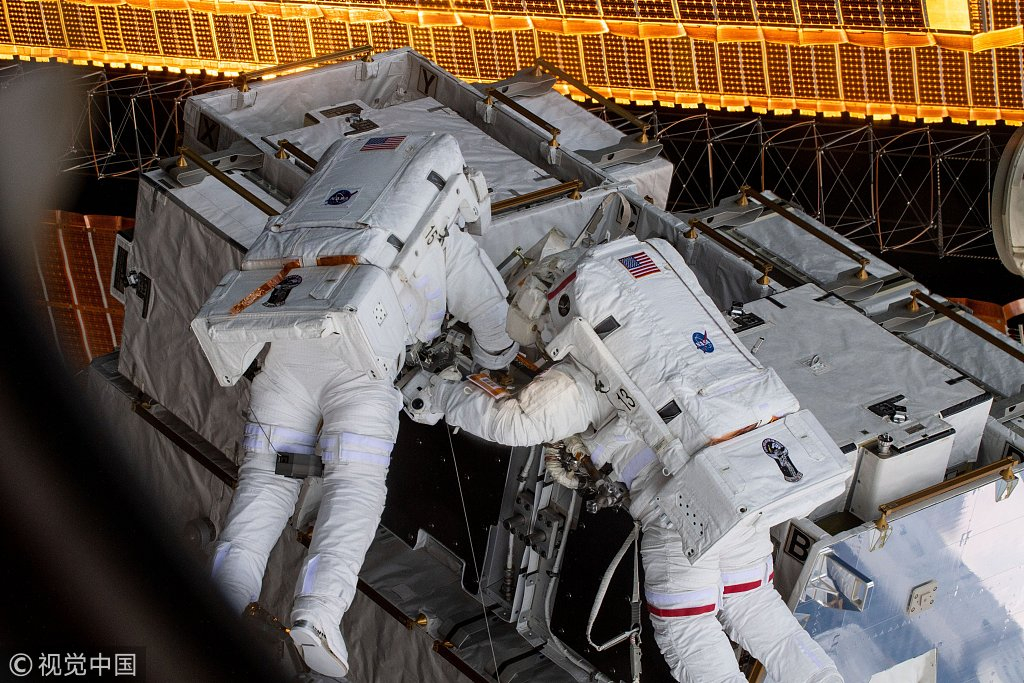
Opinion
16:06, 01-Apr-2019
Commercial space exploration should be the way forward
David Lee

Editor's note: David Lee is a consultant and author based in Beijing who works on cross-cutting themes of energy, health, international politics and international development. The article reflects the author's opinion, and not necessarily the views of CGTN.
As the U.S. prepares to celebrate the 50th anniversary of the first Apollo moon landing in July, U.S. Vice President Mike Pence declared last week the country would land its astronauts on the Earth's closest space neighbor again in five years' time, i.e., by 2024. More importantly, addressing the National Space Council, America's space policy office re-instated by the Donald Trump administration, Pence stressed that the U.S. would go back to the moon "by any means necessary," apparently unimpressed by the current progress made by NASA.
To paraphrase Pence, who heads the National Space Council, equipment and technology provided by private space exploration entities would be used to accelerate the moon landing process. NASA is struggling to make things happen soon enough. Looking at the current pace at NASA, it would seem impossible to return American astronauts to the moon within the ambitious time window. Hence Pence made the call to redouble the effort by enlisting support from the private sector.
To put Pence's call for landing Americans on the moon by 2024 in perspective, the Trump administration had previously produced budget plans for space exploration that called for increased public-private partnerships (PPP) to lower costs and encourage private sector innovation.

A SpaceX Falcon 9 is readied for launch from Complex 40 at the Cape Canaveral Air Force Station, Florida, December 17, 2018. /VCG Photo
A SpaceX Falcon 9 is readied for launch from Complex 40 at the Cape Canaveral Air Force Station, Florida, December 17, 2018. /VCG Photo
Commercial space exploration, in the past, has proven to be viable and successful, mainly in the area of low-cost space launch of commercial satellites. The former Barack Obama administration started the paradigm shift towards using commercial entities for major national space exploration projects, but things in the field were taking place in an incremental way. The Trump administration has shown a general impatience, culminating in Pence's 2024 back-to-the-moon mission declaration.
If equipment and technology from commercial entities were to play a part in a major flagship project like Americans returning to the moon, the symbolic meaning would be extremely enormous as to fundamentally change the perception about the role and capacity of commercial space exploration.
The next five years, therefore, will be a very interesting and crucial period to see how commercial space exploration evolves in the U.S., and how American experimentation impacts other parts of the world.
Since the end of its Space Shuttle program in July 2011, the U.S. has been pursuing a commercial solution for crewed spaceflight. It was only last month that NASA's Crew Dragon astronaut capsule was successfully launched into space by a Falcon 9 rocket, but with only a dummy named Ripley on board. The actual manned mission would take place later this year. If past experience is any indication of the timeline to go forward, the U.S. must significantly accelerate the pace of its public-private partnership (PPP) development, hence Pence's effort-redoubling comment.

Astronauts Anne McClain and Nick Hague carried out a spacewalk for six hours and 39 minutes, March 22, 2019. /VCG Photo
Astronauts Anne McClain and Nick Hague carried out a spacewalk for six hours and 39 minutes, March 22, 2019. /VCG Photo
How international space cooperation evolves with the PPP model is also an interesting topic to examine. The current competitive field seems to suggest that a national government only favors indigenous companies for cooperation only. While implementing the PPP model, NASA is basically buying the United States. Of course, commercial space exploration is still an area accessible only to the very few top industry players, and American companies happen to represent the leading procurement sources available.
Commercial space exploration is regarded as a business blue sea. Non-American commercial players are catching up, though still far lagging their American counterparts. The year 2018 marked the beginning of commercial space launch in China, with several sub-orbital launches during the course of the year. Last month, a Chinese private business attempted the first orbital launch, though without success.
China and all other space players will follow the American PPP model of space exploration very closely. The PPP acceleration expected to happen in America in the next five years will be a very interesting case to generate significant experience. Also, with the PPP model continuing its transit from experimentation to mainstream, not only in the U.S. but also in other space nations, new competition dynamics will arise in the commercial space exploration market. International procurement sources should be the way forward in the long run.
(Cover photo: Vice President Mike Pence speaks at the Kennedy Space Center, Florida, December 18, 2018. /VCG Photo)
(If you want to contribute and have specific expertise, please contact us at opinions@cgtn.com.)

SITEMAP
Copyright © 2018 CGTN. Beijing ICP prepared NO.16065310-3
Copyright © 2018 CGTN. Beijing ICP prepared NO.16065310-3